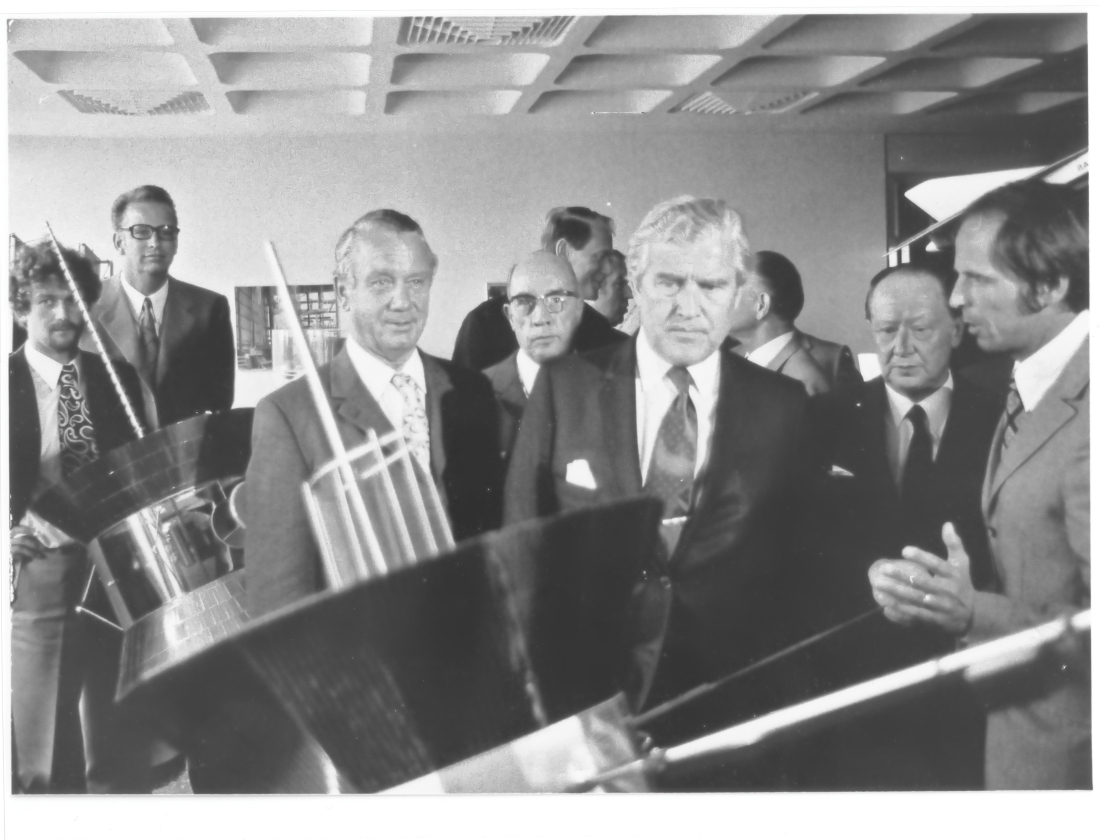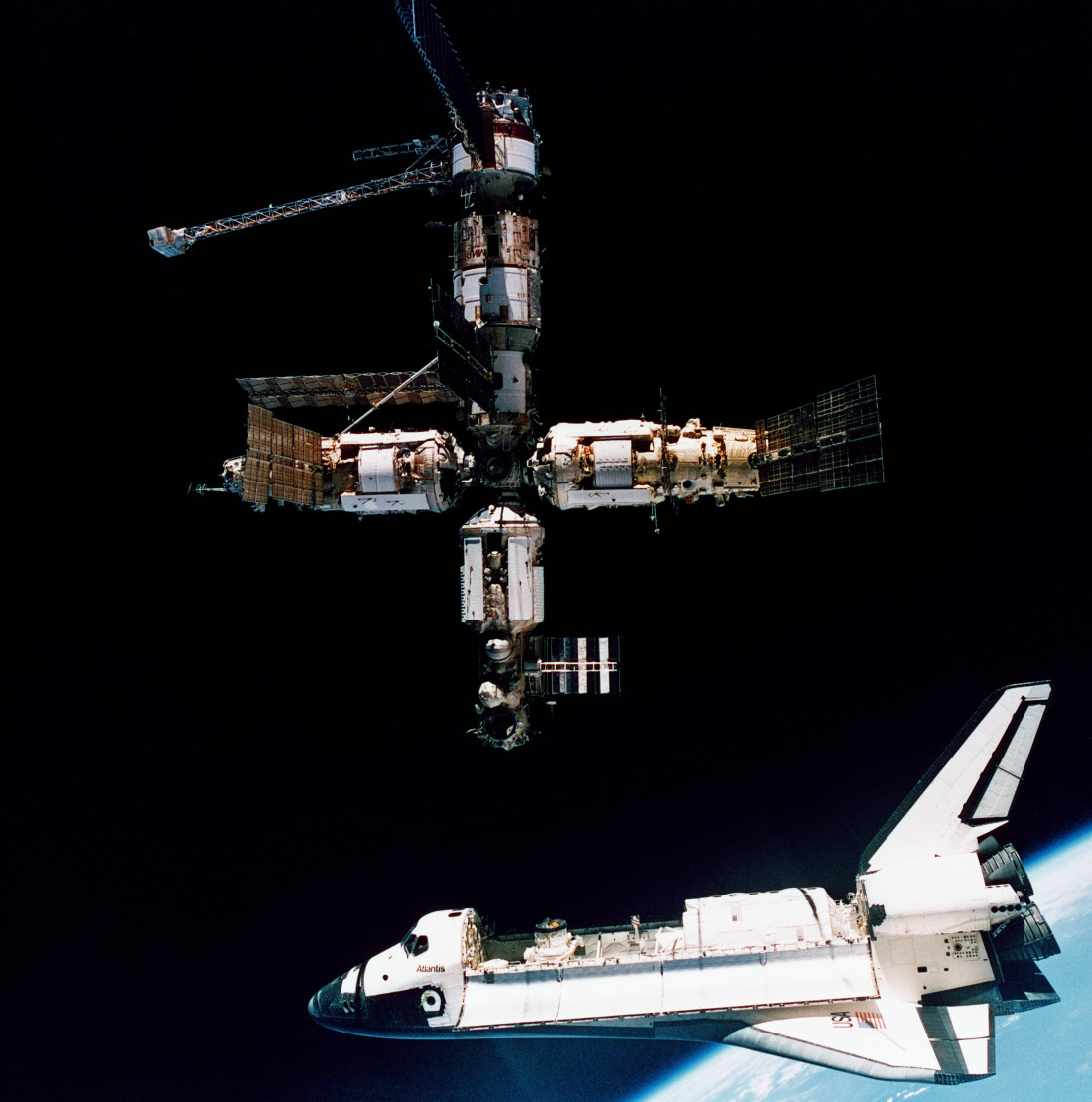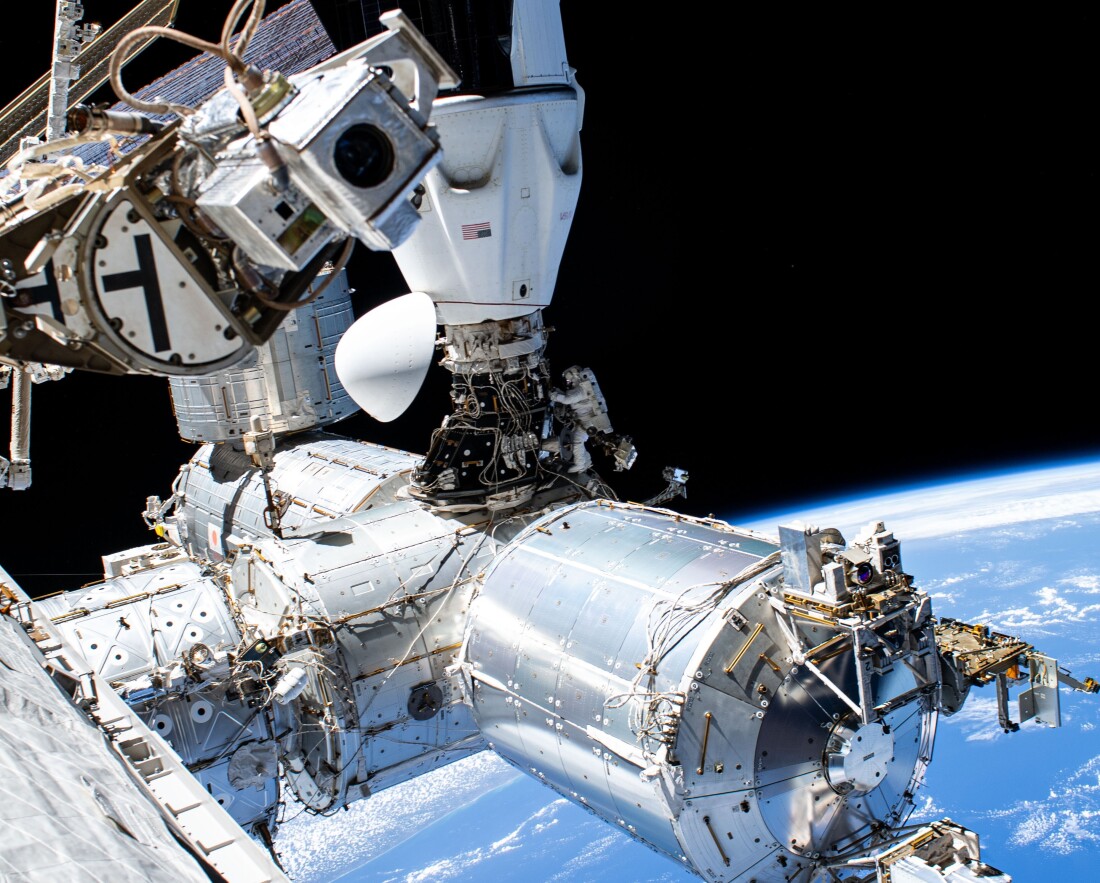The history of space travel in Bremen
AerospaceCorporate initiative creates one of the world's largest space centres in the 1960s

The history of space travel in Bremen begins in 1961 with the founding of the "Entwicklungsring Nord" (ERNO). Today Bremen is the number 1 space centre in Germany and is known far beyond the country's borders. We look back over a history involving rockets, spacecraft and satellites.
History of space travel in Bremen: rockets and space laboratories
1961
Looking back, it was exactly the right time when the then Technical Director of Focke-Wulf-Flugzeugwerke in Bremen, Professor Gerhard Eggers, invited a number of engineers and scientists to a meeting in the summer of 1961. The Russian Yuri Gagarin and the American Alan Shepard had just returned from the first manned flights into space; US President John F. Kennedy had declared the first landing of a man on the moon to be a national goal by the end of the decade; and German politicians were also clearly committed to Germany's participation in the beginning of European space exploration. Egger's idea of pooling the development expertise of Bremen's traditional companies Focke Wulf and Weser Flugzeugbau as well as Hamburger Flugzeugbau for initial aerospace activities fell on fertile ground. Even the far-sighted initiator of the development probably did not realise that many years later, the European aerospace group Airbus and many of the most important space projects in Europe would be based on this initiative.
The time line of minor and major technological developments for European space travel that originated in Bremen is long. Since 1961, the work for the European launcher "Ariane" and its predecessors has been a recurring theme throughout this history.
1963
In 1963, ERNO was awarded a contract by the European Launcher Development Organisation (ELDO) to develop an engine for the upper stage of the first European launcher, "Europa". After all three launches with the Europa 1 model failed, the follow-up projects Europa 2 and 3 were cancelled. But the Europa 3 was the model for Ariane 1, which started the Ariane success story that continues to this day.
1979
The first Ariane 1, whose second stage was also largely developed and built in Bremen, was launched in1979. Bremen also made significant contributions to the successor models Ariane 2 to 4. Since the development of Ariane 5 and now also for Ariane 6, the Bremen site of ArianeGroup has supplied the complete upper stage, which also contains the "brain" of the rocket – the control and data processing centre.

1974
The next major milestone in Bremen's space history involved the development and construction of the European space laboratory SpaceLab. In 1974, the European Space Agency ESA selected ERNO as the main contractor to develop and build the SpaceLab together with other companies.
1981
The first flight unit was delivered in 1981. The SpaceLab was reusable and was to fly into space on NASA's Space Shuttle.
1983
In 1983, the Space Shuttle Columbia took off on its maiden flight. After 22 launches and 25 years after the start of the project, the SpaceLab era ended in 1999.
1985
In 1985, the European Space Agency ESA decided to build the Columbus module for the ISS. However, after several reorganisations, cost reductions and new plans, the contract was not awarded to EADS Astrium – one of the successor companies to the Entwicklungsring Nord – until 1996. Nevertheless, there were further technical and financial challenges in the following years, and it was not until 2006 that the Columbus module was delivered, docking to the space station in 2008.

History of space travel in Bremen: OHB – from hydraulics workshop to aerospace group
1985
In 1985, Bremen as a centre for space travel gained a new player, which developed from the smallest of beginnings into a European industry giant within just a few years. Manfred Fuchs gave up his job as Director of Aerospace at ERNO/MBB and moved to Otto Hydraulik Bremen GmbH (OHB), which his wife Christa had bought in 1981. Initially, OHB developed systems and components for experiments in space.
1991
In 1991, the company changed its name to Orbital- und Hydrotechnologie Bremen-System GmbH and began to specialise in the development and construction of satellites. From the very beginning, Manfred Fuchs was an advocate of small satellites, which are much less costly than the large and heavy equipment used up to then.
1994
In 1994, the BremSat developed by OHB was launched into space as one of the first small satellites produced in Germany. The first telecommunications satellites followed later, before OHB became involved in major projects such as the SAR-Lupe for the German Armed Forces (2006 to 2008) and the European navigation system Galileo (since 2011). With subsidiaries throughout Europe, the OHB Group is now active in practically all branches of the space industry. Major projects include participation in Columbus, the European part of the International Space Station (ISS).
History of space travel in Bremen: pioneer of the reusable space transporter
In addition to launch vehicles, considerations about reusable space transporters also run through Bremen's entire space history. The first ideas had already been developed by Austrian-born aerospace engineer Eugen Sänger, who tested rocket engines on Lüneburg Heath in the 1930s. The Trauen test centre he founded is part of the Airbus site in Bremen, where liquid rocket fuel is refined, among other things.
1962
In 1962, the first feasibility studies were initiated on the question of whether reusable space transporters could be realised as a cost-effective alternative to "disposable" rockets. In fact, from 1967 onwards, the first test flights were flown with plastic models, which were launched from transport aircraft at high altitude. In 1974, however, Germany decided to invest in the development of the American Space Shuttle. Nevertheless, together with France, transport spaceplane development was continued in 1977 with the HERMES project. The concept for the Automated Transfer Vehicle (ATV), which flew to the International Space Station as an autonomous supply unit on a total of five missions between 2008 and 2015, was developed in Bremen via several intermediate stations – including the flight-capable model of the Phoenix space transporter (2004). Unlike the Phoenix and HERMES spaceplanes, the ATVs could not be reused, but burnt up in the atmosphere. Their impressive achievement was the largely autonomous flight and the equally autonomous docking with the space station.

The success of the ATV was the starting point for what is probably the most spectacular space project "made in Bremen" to date. Since 2020, Airbus Defence and Space in Bremen has been working with a number of partners in Europe and the USA to develop and build the European Service Module (ESM) for the Orion spacecraft, which NASA wants to use to take astronauts back to the moon in the near future. In addition to the supply tanks, the ESM also contains the propulsion system that will take the Orion capsule and four astronauts to the moon after leaving Earth orbit. The order for the space industry in Bremen is considered a very special honour, this being the first time that NASA has contracted the development and construction of such an important system-critical component outside the USA.
ERNO is still part of the DNA of Bremen as a space centre today
Over the decades, the Entwicklungsring Nord, which stood at the beginning of this success, has almost been known by name only to insiders – even if it is still visible in the DNA of Bremen's space industry today.
The working group initiated by Prof. Gerhard Eggers became an independent company in 1965. 16 years later, ERNO Raumfahrttechnik GmbH became part of the aerospace company Messerschmitt, Bölkow, Blohm. In 1989, MBB was taken over by the Daimler-Benz subsidiary DASA, which merged with the French company Aérospatiale-Matra and the Spanish company CASA in 2000 to form the European aerospace group EADS – European Aeronautic Defence and Space Company – now Airbus. Since then, the space division of the Airbus Group has changed its name and organisational form several times, including to EADS Astrium. As one of Airbus' leading space centres, the Bremen site currently belongs to the Airbus Defence and Space division, while rocket technology has been spun off into ArianeGroup, which continues to manufacture the complete upper stage of the current Ariane 6 launcher at the Bremen site.
This article was created with the kind support of the Space History Archive Bremen e.V..
Are you also interested in the history of aircraft construction in Bremen? Then read the first part of our "Aviation history of Bremen: 1924-1945" here, or the second part "The history of aircraft construction in Bremen – Part 2: 1952 – 2024" here.
Success Stories
How a space enthusiast campaigns for women in STEM fiels and Bremen as a space location
How does someone from a small village in Poland end up working on human spaceflight in Bremen? Dr. Anna Chrobry shares her journey through science, passion, and perseverance—and explains why she proudly calls herself a "space girl."
Learn moreVisions for the future of aerospace
From car navigation systems to weather reports - hardly anything works without satellites. They need fuel, but this is often toxic. The Institute of Aerospace Technology at Bremen University of Applied Sciences is researching environmentally friendly alternatives. What the future of space travel could look like.
Learn moreTake-off for Bremen: what makes the city a hub for aerospace expertise
The sky is not the limit. Science, production, development and business all agree on this. Aircraft wings, Ariane rockets, Galileo satellites - Bremen is one of the top locations in the international aerospace industry. Five reasons for Bremen's success story.
Learn more